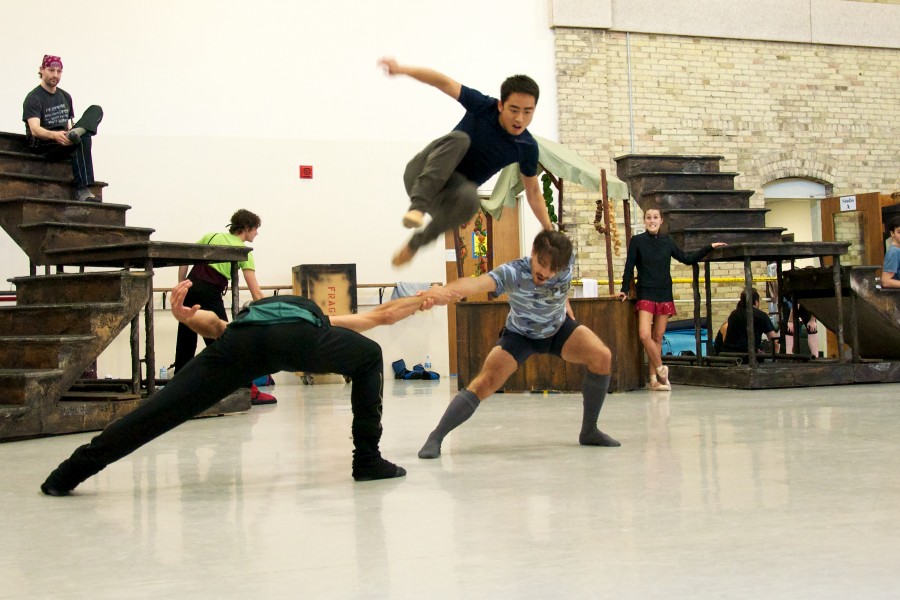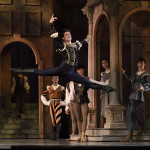Classical ballet has always been an art of belief. It does not fare well in cynical times. – Jennifer Homans, Apollo’s Angels (2010)
In 2010, Jennifer Homans wrote a searing eulogy for ballet, in the final chapter of Apollo’s Angels, her brilliant, meticulous history of the art form. In a nutshell, Homans claimed that, in the 27 years since the death of George Balanchine, no choreographer of equal stature has emerged and, therefore, the art form is dead.
This month, she hammered another nail in ballet’s coffin, with an op-ed in the New Republic entitled “The Crisis in Contemporary Ballet: How Emotion Left Dance.”
After reading this gloomy tract, Ballet to the People was about to reach for the Prozac when instead she decided to reach for the phone and call Michael Pink. Artistic Director of the Milwaukee Ballet for the past ten years, Pink is both a firm pragmatist as well as an unflagging optimist on the question of ballet.
Have you heard that we’re in Crisis, she asked him glumly. Tell me it isn’t so.
Pink sounded mildly exasperated. Though he agrees with Homans that much of contemporary ballet has become an exercise in bloodless pyrotechnics, he asked, unsentimentally, why we need to replace Balanchine. “There is an urgency, at the leading ballet companies, to anoint,” he pointed out. “And as soon as they think they’ve discovered the new genius, they proclaim it so everyone can breathe a sigh of relief and carry on.”
There are choreographers doing fascinating work, but with the current star system that has turned the top dancers and dance-makers into jet-setters, talent is no longer being cultivated in stable soil; ballet companies in turn find it difficult to grow loyal audiences with peripatetic stars popping in and out.
That said, Pink briskly reminded Ballet to the People that the European tradition of story-telling through ballet is thriving in pockets around the world.
Somewhat cheered, Ballet to the People fired up a DVD of Milwaukee Ballet’s Romeo and Juliet, which is being revived this month at the Marcus Center for the Performing Arts. Commissioned originally by Atlanta Ballet, with splendid but unfussy set and costumes, this Romeo captures the physicality and the emotional turmoil of Shakepeare’s tragedy and of Prokofiev’s gloriously evocative score, more a force of nature than just a piece of music. Blessed with the fresh and lively playing of Milwaukee Ballet’s own orchestra, the film by Milwaukee public television is of unusually high quality for a live performance.
Leonid Lavrovsky’s original choreography for the Kirov Ballet (and later the Bolshoi) was groundbreaking in 1940 for its fusion of natural, everyday movement and gestures with classical ballet steps. In 1962, Kenneth MacMillan took the concept further in his deep psychological exploration of a troubled young girl’s sexual awakening. Now Michael Pink serves up a blistering portrait of teenage rebellion and dysfunctional parenting that resonates with modern audiences.
This is less a star vehicle – although the lead performances by Luz San Miguel and Davit Hovhannisyan are riveting indeed – than an ensemble triumph. The witty and inspired choreography for Romeo’s rambunctious pals and for Juliet’s entourage of girlfriends – highlights of Act I – cement the idea that this pair are not unique: they represent legions of disaffected young people whose futures have been sabotaged by the petty-minded, vengeful, self-absorbed machinations of their elders.
Where MacMillan and others have skimmed over certain elements in the narrative, Pink pays attention to the smallest details in his wildly entertaining crowd scenes and in his merciless portrayals of the sadistic Lord Capulet, the tightly wound Lady Capulet, the sensual, swaggering Tybalt, the irresistible and irresponsible Mercutio, and the courtly but clueless Paris. Pink matches the violence of Prokofiev’s score in the fight scenes, and gives us a no-holds-barred take on the intimacy of the balcony and bedroom scenes. The high-octane physical conflict, and the unabashed kissing and fondling in this Romeo and Juliet ring true, as does the classical choreography for each of the characters, not a gratuitous step in the painting of individual personality and motivations.
Is it possible that Jennifer Homans just needs to get out more? Has she traveled to the West Coast recently, Ballet to the People wondered? Or Milwaukee? Where Michael Pink and his team perform a minor miracle every year, running a 25-dancer company along with a dedicated ballet orchestra of 48 musicians, boosting attendance on a budget of just under six million dollars, producing two full-length narrative ballets a season and mixed bills that feature classic and new work by an eclectic ensemble of choreographers from Balanchine to Adam Hougland and Jessica Lang, in addition to the money-spinning Nutcracker, plus a distinguished choreography competition that draws up-and-coming dance-makers from around the world?
Some bracing straight talk from Pink on the state of dance today:
We have these great artists today – phenomenal technicians, doing things that dancers of my generation couldn’t dream of doing – but sometimes there is no justification for what they do, for the steps they’re dancing. You need a reason for moving. Otherwise so much of contemporary dance starts to look the same.
Hardly complacent, Pink believes that dance companies large and small could very well be on the brink of extinction if they cling to a sense of entitlement, of self-worth based on the idea that they are presenting a rarefied art form. They must prove they’re fiscally responsible, that what they’re doing is sustainable. And they have to build interest among that elusive demographic: Millennial audiences, who, if they watch dance at all, would rather watch it in 90-second bursts in television competitions.
If Pink’s Romeo and Juliet, which opens on October 31st for four performances, doesn’t contain enough thrills to attract the Millenials, then nothing will.
Meanwhile, Luz San Miguel took her last dramatic breath, slumped against a lifeless Davit Hovhannisyan, and Ballet to the People rained tears of joy all over her laptop at this visceral reminder that ballet is alive and well. In Milwaukee, at least.
– This article also appeared in the Huffington Post. –










Wonderful review of this production by Tom Strini:
http://striniwrites.blogspot.com/2013/11/milwaukee-ballet-opens-with-michael.html